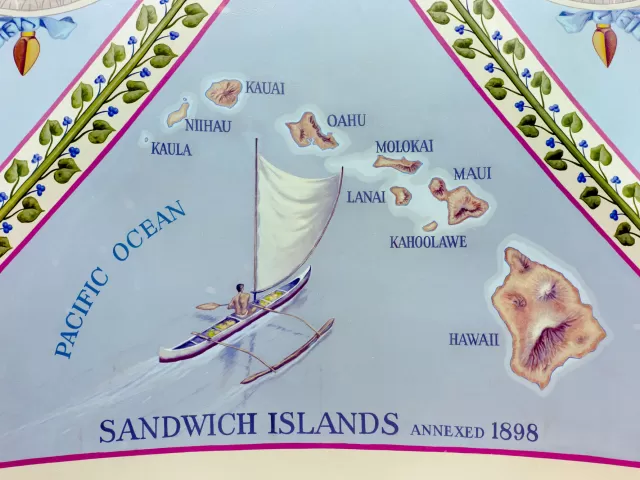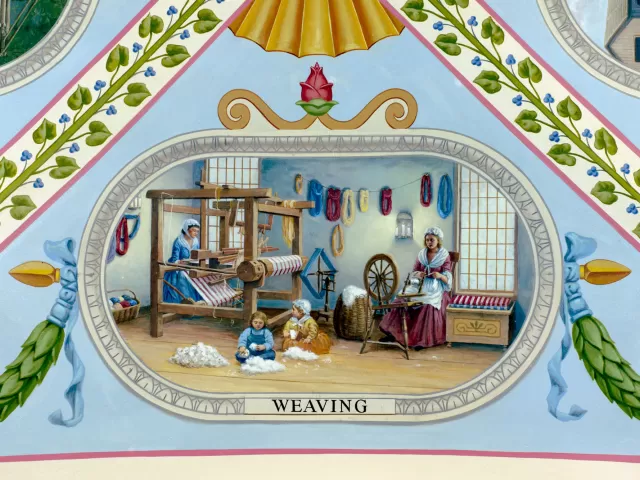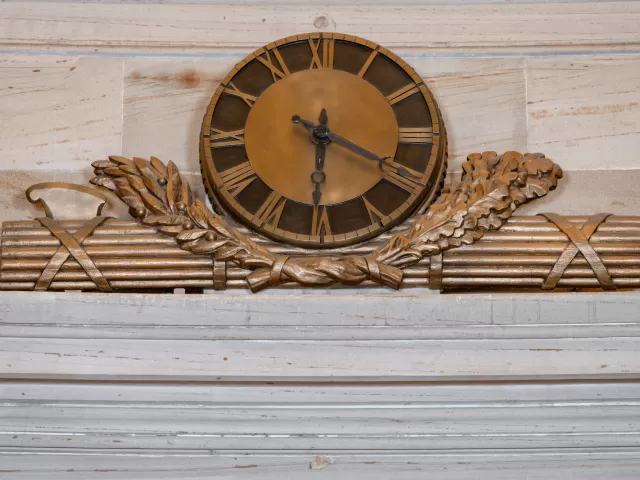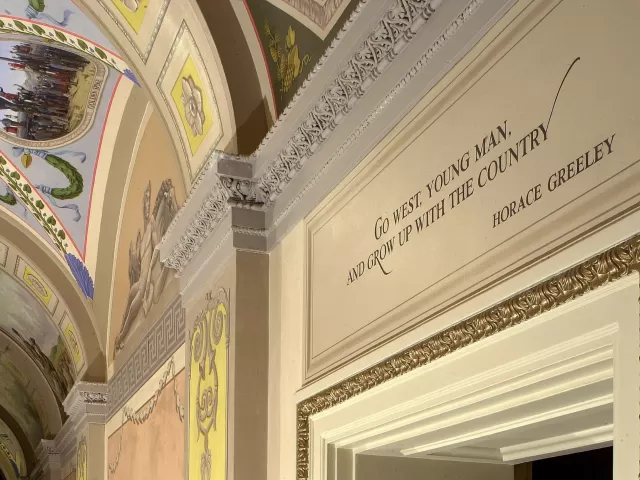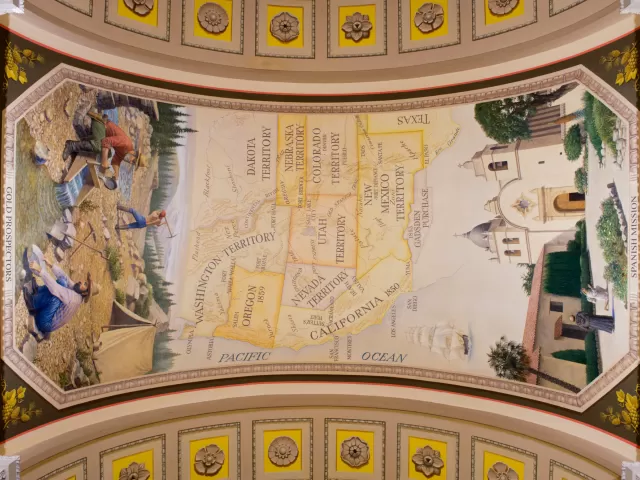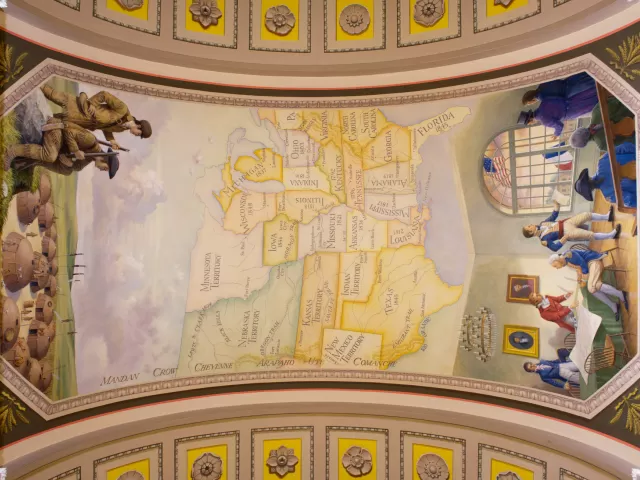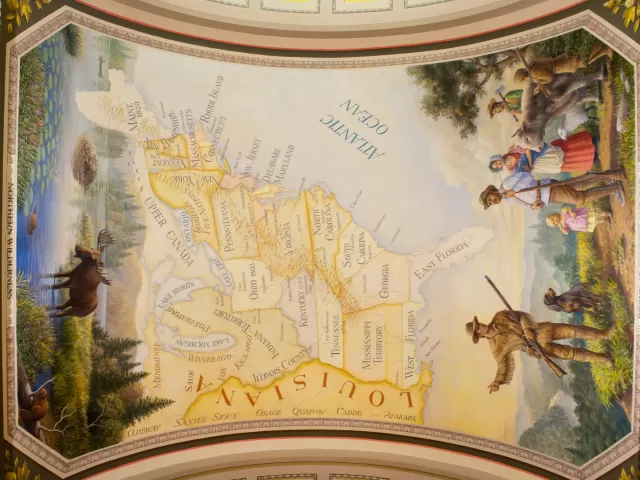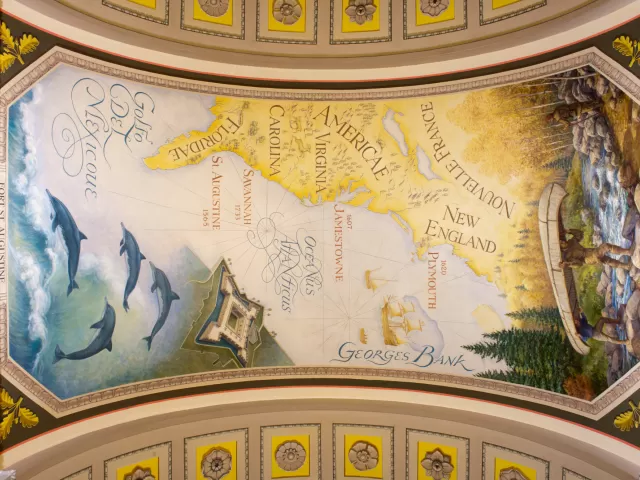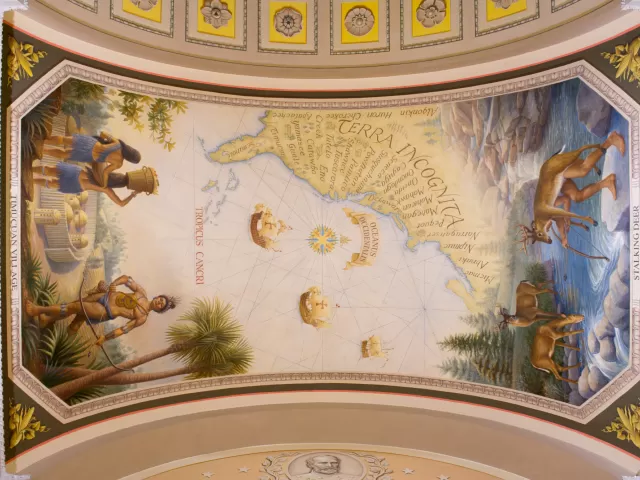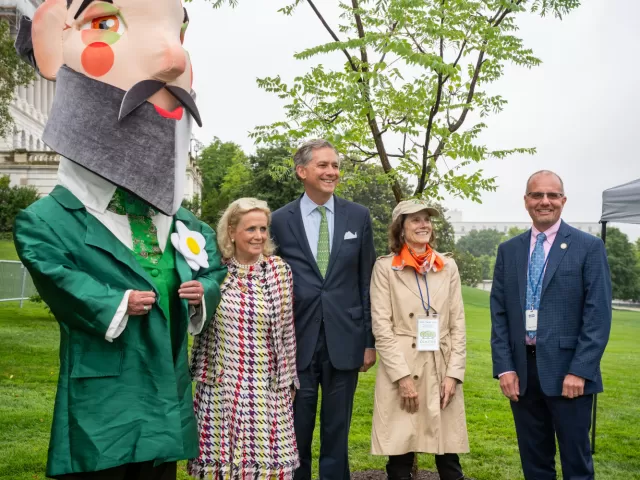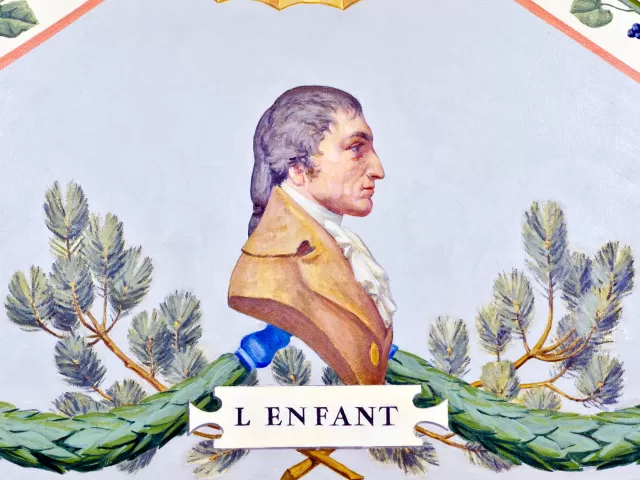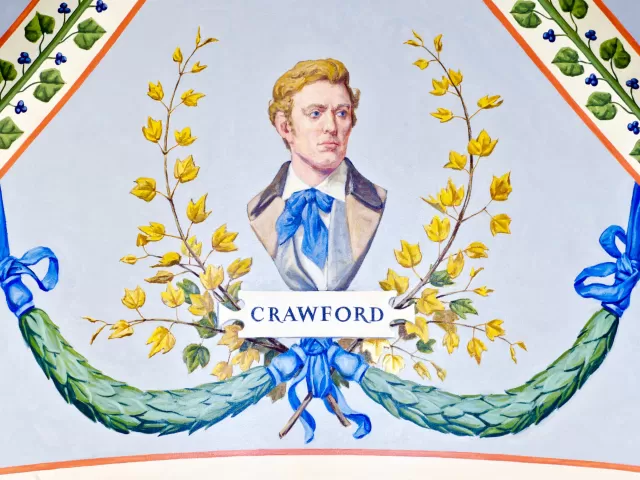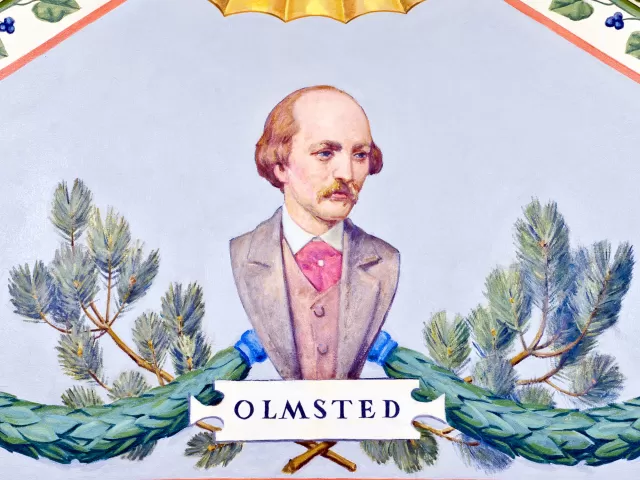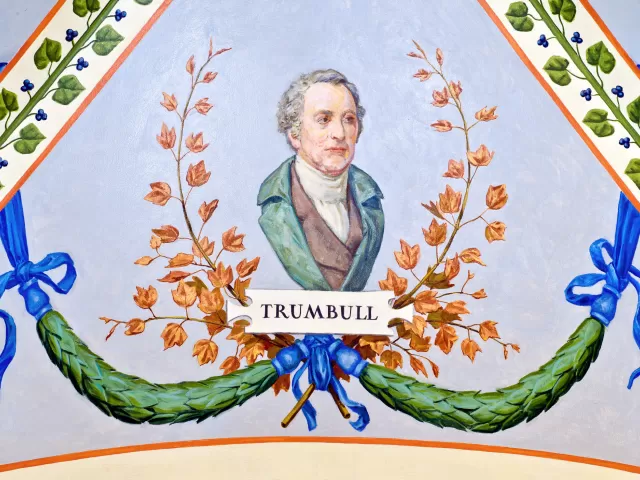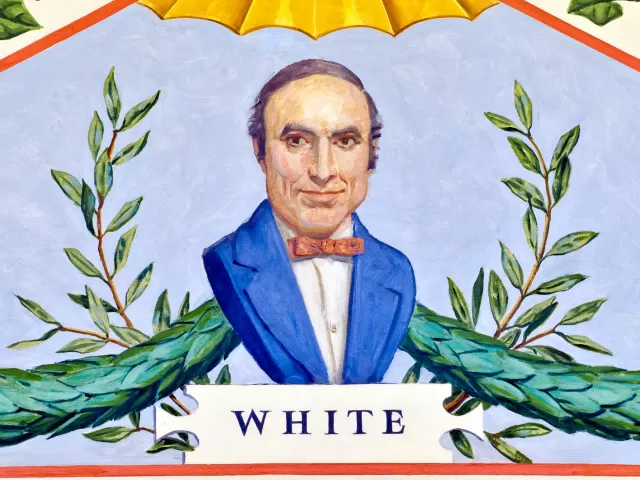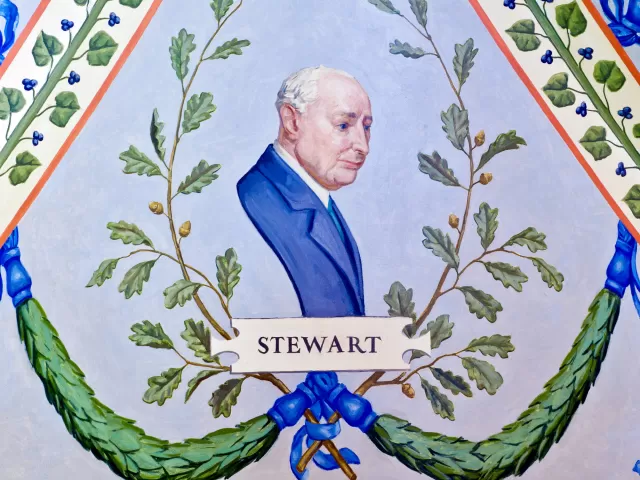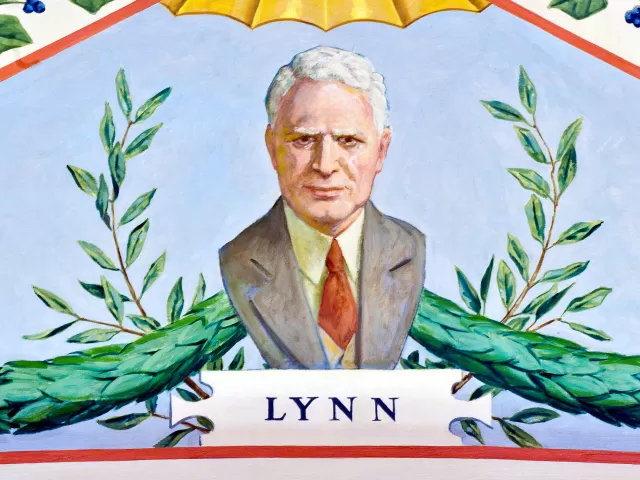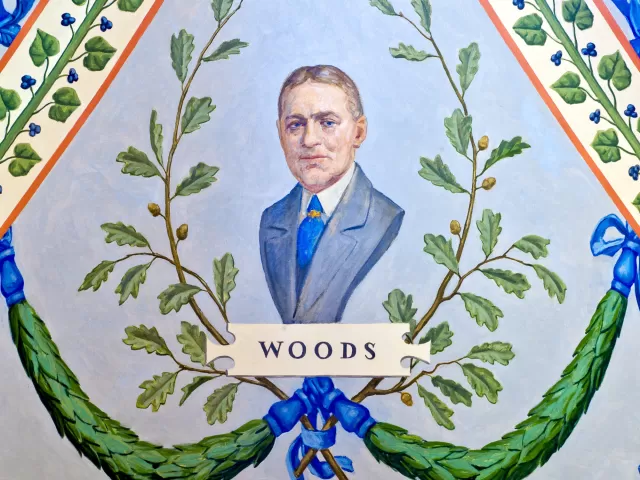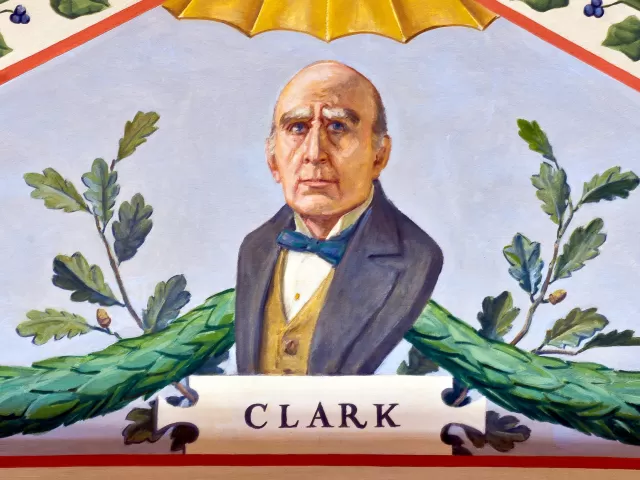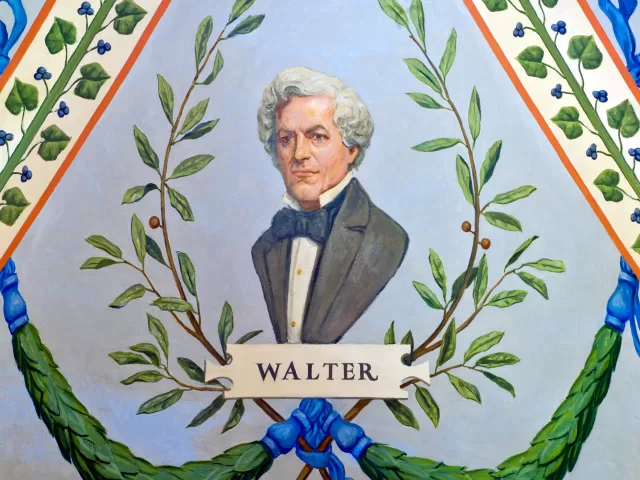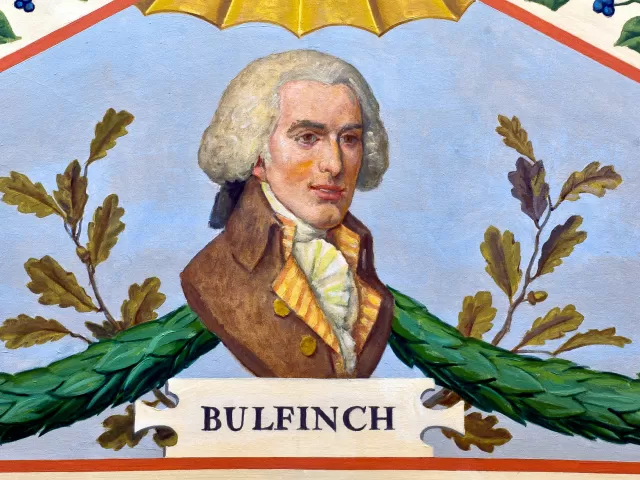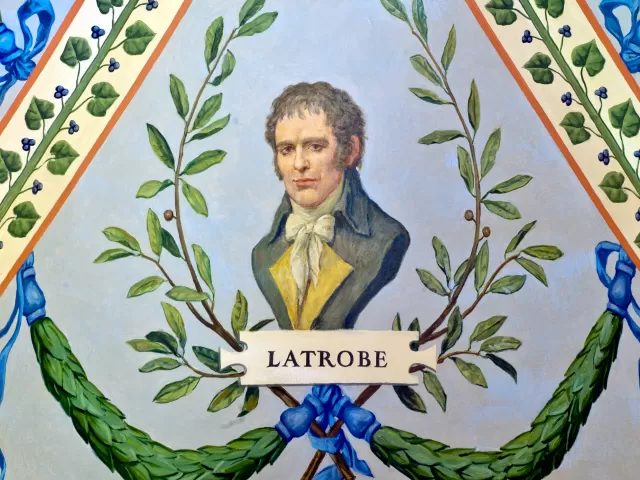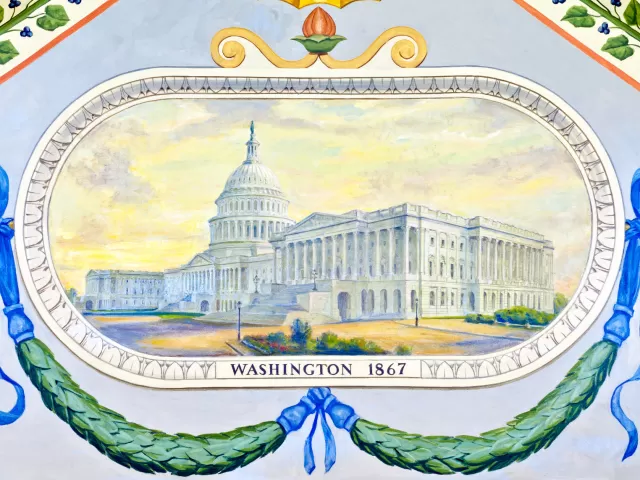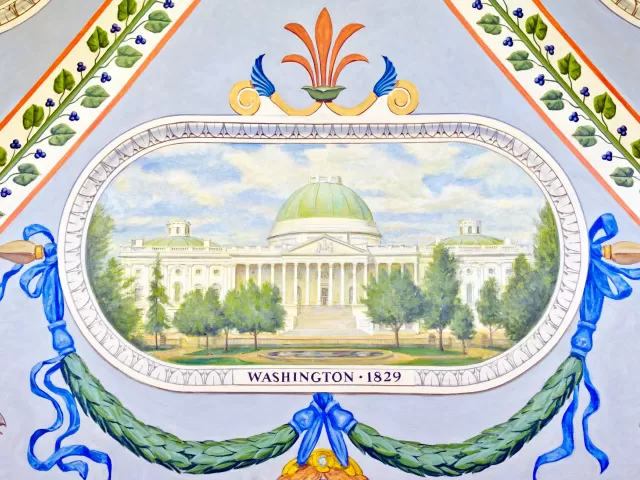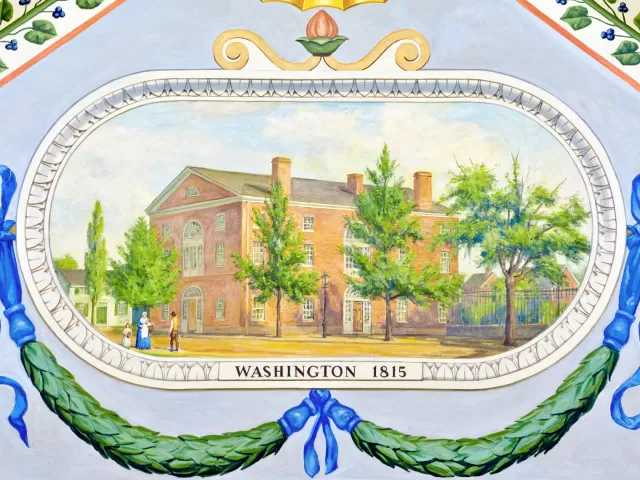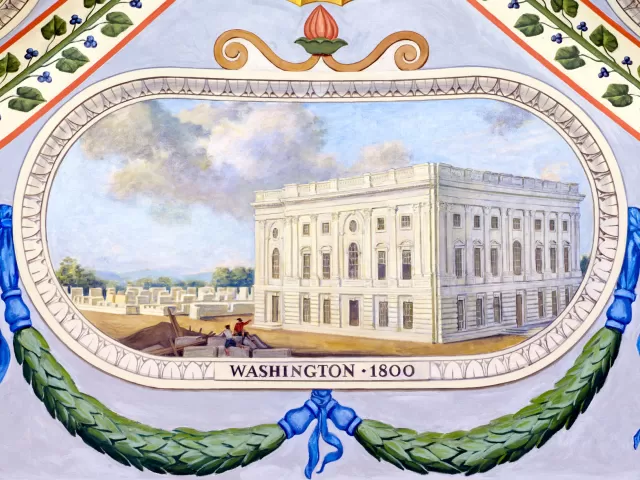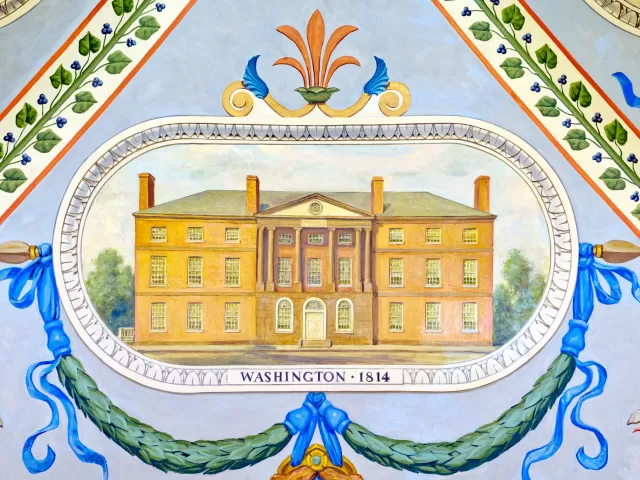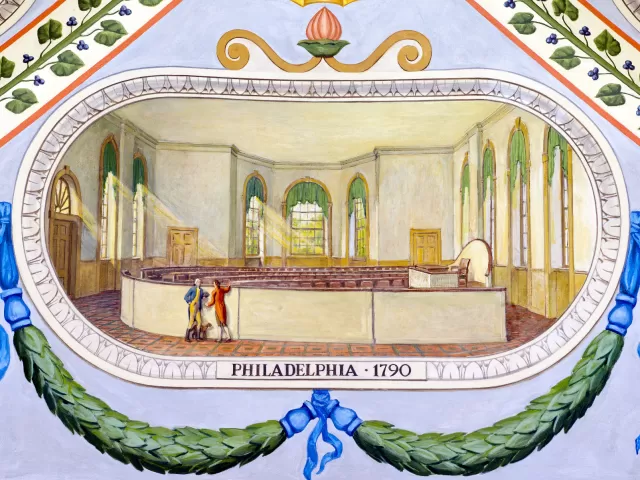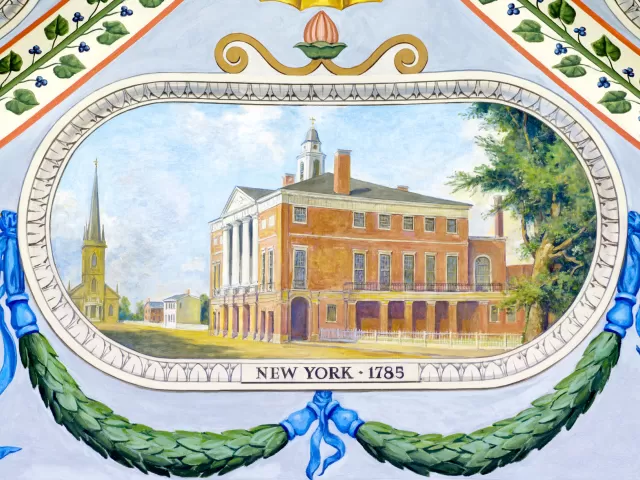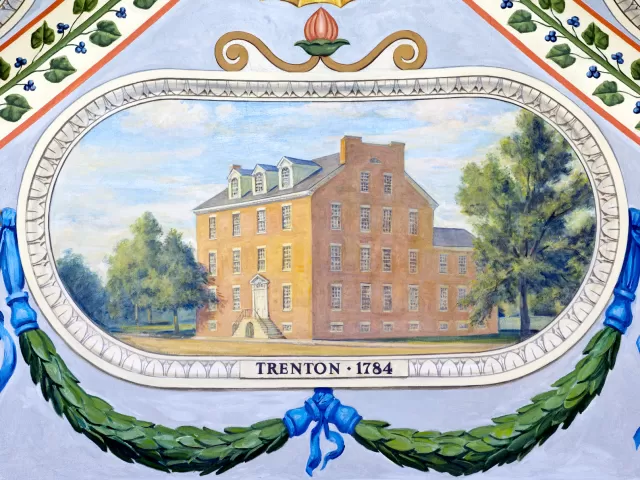Displaying 91 - 120 of 510 Clear
Highlight
A map shows the islands now called Hawaii, which were annexed in 1898; an island native carries fruit in an out-rigger canoe with a cloth sail.
Highlight
The craft is shown as a family operation, with children carding the wool, a young woman spinning it, and an older woman operating a loom.
Highlight
The clock sits on a base composed of a wreath and fasces, a Roman symbol used throughout the Capitol that represents authority or law. In the early American republic, fasces also represented the strength of the states when united. The wreath below the clock face is made of laurel and oak branches
Highlight
A list of some of the quotations and inscriptions found in the buildings on Capitol Hill.
Highlight
The map shows the states and territories stretching west from Texas to the Pacific Ocean and marks the Oregon, California, and Old Spanish Trails as well as the Pony Express route. Also shown are Sutter's Fort, where gold was discovered in California; the sites of Spanish missions and forts; and the
Highlight
The map shows the central section of the continent to illustrate the effect of the Louisiana Purchase (1803), the Lewis and Clark expedition, and the opening of the West. Ohio is shown with the seven ranges, the grid system that was started in eastern Ohio and was then used to map out many of the
Highlight
The map shows the states and territories between the Atlantic Ocean and the Mississippi River. Important cities (state capitals, trade centers, or otherwise influential in westward expansion) are indicated, and the names of Native American tribes appear to the north and west. About the Cox Corridors
Highlight
The map shows the first four settlements in America, from St. Augustine (1565) to Plymouth (1620). About the Cox Corridors Murals The first floor of the U.S. Capitol's House wing is elaborately decorated with wall and ceiling murals by artist Allyn Cox. The western north-south corridor, called the
Highlight
The map is inscribed "Terra Incognita" (Latin for "Unknown Territory"). On it, the names of the original Native American tribes of the eastern coast of North America appear in the tribes' approximate geographic locations. This first map shows the edge of the continent before the arrival of Columbus
Highlight
U.S. Capitol Grounds memorial tree to honor Frederick Law Olmsted Sr. sponsored by Rep. French Hill and Rep. Debbie Dingell.
Highlight
Pierre Charles L'Enfant designed the new federal city, Washington, D.C.
Highlight
Thomas Crawford designed the House and Senate bronze doors, the Senate pediment sculpture, and the Statue of Freedom that stands atop the U.S. Capitol Dome.
Highlight
Frederick Law Olmsted designed and carried out the landscaping of the U.S. Capitol grounds in the late 19th century.
Highlight
John Trumbull painted four scenes related to the Revolutionary War for the U.S. Capitol Rotunda.
Highlight
George M. White, who served as Architect of the Capitol from 1971 until 1995, constructed the Library of Congress Madison building, the Hart Senate Office Building, and the Thurgood Marshall Federal Judiciary Building.
Highlight
The extension of the U.S. Capitol's East Front and construction of the Rayburn House Office Building were highlights of Architect of the Capitol J. George Stewart's 1954-1970 term of service.
Highlight
During his tenure as Architect of the Capitol, from 1923 to 1954, David Lynn built the second House and Senate office buildings (now named the Longworth and Dirksen buildings, respectively), the second Library of Congress building (now named the Adams building), and the Supreme Court building.
Highlight
Elliott Woods, who served as Architect of the Capitol from 1902 to 1923, constructed the first House and Senate office buildings (now named the Cannon and Russell buildings, respectively).
Highlight
Edward Clark, the longest-serving architect to date (1865-1902), completed the porticoes of the new wing extensions and oversaw construction of the first Library of Congress building (now named the Jefferson building).
Highlight
Architect Thomas U. Walter served at the U.S. Capitol from 1851 to 1865; he constructed the House and Senate wing extensions and the present dome.
Highlight
Between 1818 and 1829 the Capitol's center section and first dome were constructed under the direction of architect Charles Bulfinch.
Highlight
Benjamin Henry Latrobe, who served as the U.S. Capitol's architect from 1803 to 1811 and from 1815 to 1817, built the Capitol's south wing and redesigned and rebuilt the north wing.
Highlight
The expansion of the nation led to the growth of the Congress, and by 1850 the Capitol Building was much too small. Over a period of 17 years, the present House and Senate wings were added to the old building and the low central dome was replaced with a cast-iron dome better suited to the enlarged
Highlight
The U.S. Capitol Building and Grounds were first completed by Charles Bulfinch in 1829. This image shows the building's East Front.
Highlight
Only the north (Senate) wing of the U.S. Capitol Building was ready for the Congress by 1800. As construction continued on the rest of the building, this wing accommodated the Senate, the House of Representatives, the Supreme Court, the Library of Congress, and the district courts.
Highlight
Only the north (Senate) wing of the U.S. Capitol Building was ready for the Congress by 1800. As construction continued on the rest of the building, this wing accommodated the Senate, the House of Representatives, the Supreme Court, the Library of Congress, and the district courts.
Highlight
In August 1814, during the War of 1812, invading British troops burned the U.S. Capitol and other buildings in Washington. That fall, Congress met in the Patent Office building (now the National Portrait Gallery/Smithsonian American Art Museum).
Highlight
Following passage of the "Residence Act," which required the government to move to a new city on the Potomac River in 1800, Congress moved to Philadelphia for a 10-year stay at Congress Hall.
Highlight
The Congress returned to New York's old City Hall in 1785, 20 years after the meeting of state delegates in that building. Here, in 1789, George Washington was inaugurated president and the first Congress under the Constitution was convened.
Highlight
In November and December 1784 the Congress met in the French Arms tavern in Trenton, New Jersey.
